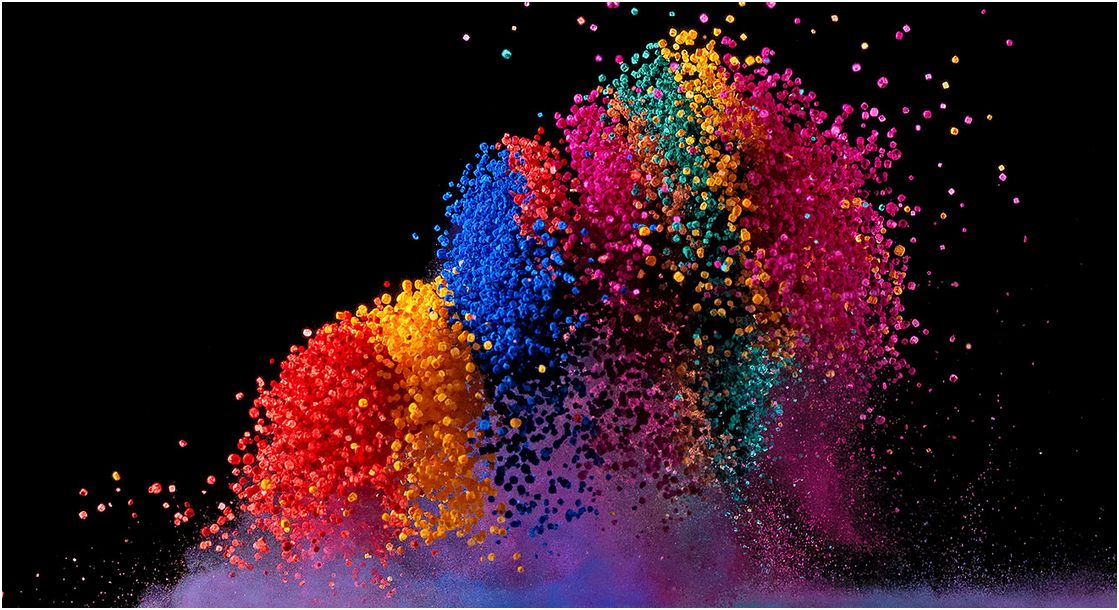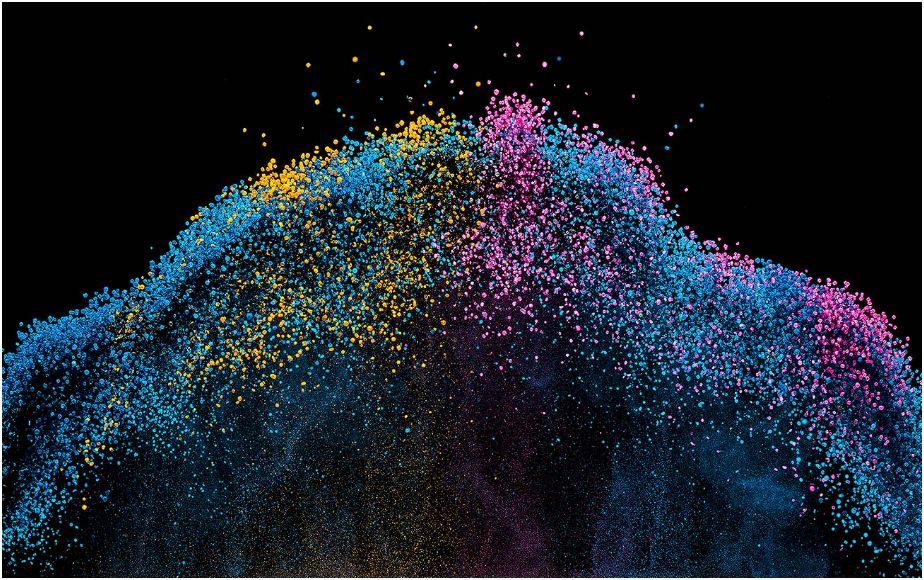Swiss photographer and artist Fabian Oefner has produced brilliantly colored works capturing the effects of different forces at precise moments in time. His collection “Dancing Colors,” for example, shows pigments at the moment sound waves raise them from the surface of a speaker.
The idea behind the series was “to build a bridge between the acoustical and the visual world,” Oefner wrote on the website 500px. To create the photographs, Oefner placed pigment-colored crystals on a plastic layer on top of a speaker.
He connected the speaker, a microphone, and a flash system, so that the flash could be triggered as soon as the microphone was activated by sound from the speaker. This allowed him to capture the instant the pigments were lifted by the sound waves.
His newest collection, “Liquid Jewel,” continues the theme of moving paint with different forces. These images show the trajectory of paint covering a balloon the instant the balloon is popped.
Taking the same idea but this time focusing on centrifugal force, Oefner’s “Black Hole” series captures paint as it’s flung outward by the motion of a drill. Paint was dripped onto a rod, which was then spun by a drill, with images taken only a millisecond after the drill is turned on, according to Oefner.
Other series include “Iridient,” in which soap bubbles are captured at the moment they burst, and “Millefiori,” in which Oefner mixed ferrofluid (“ferro” as in iron) and watercolor paints.
He demonstrates the ferrofluid technique toward the end of the TEDx talk above (in which he also discusses the “Dancing Colors” series). When a magnetic field is introduced, the iron particles form mazelike channels that hold the various colors, creating something of a Pop art feel, Oefner said.
“I’m always trying to link art and science together,” he said at TEDx. “What I find very interesting about [the two fields] is that they both look at the world around us, and yet they do it in a very different way.”
“Art, on the one side, has more of an emotional approach to the world, whereas science more has a rational approach to the world,” he said. “And by bringing those two views into one in my images, I would like to both speak to the viewer’s heart and also to the viewer’s brain.”
More images and information are available on Oefner’s site, fabianoefner.com.

